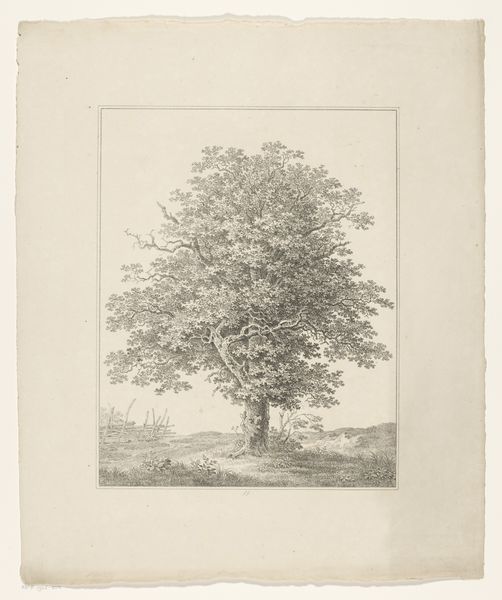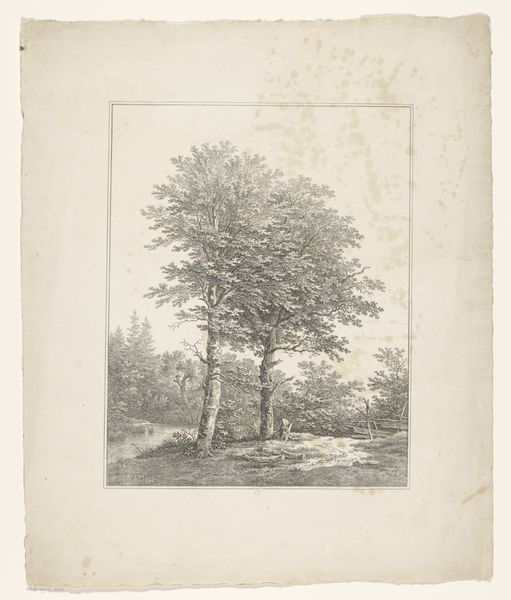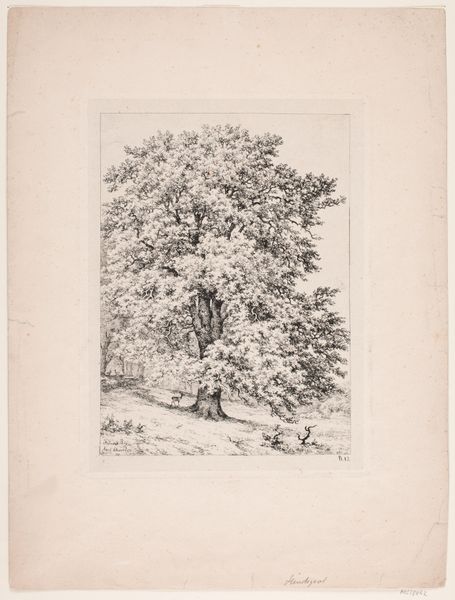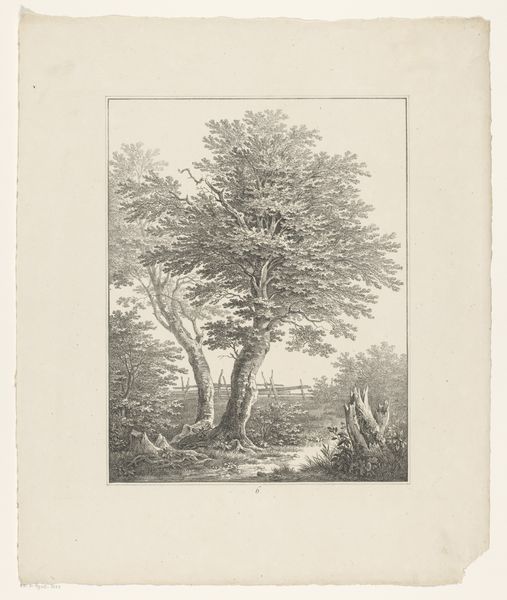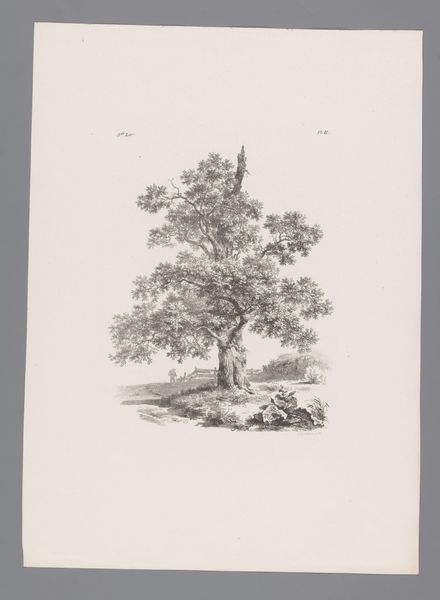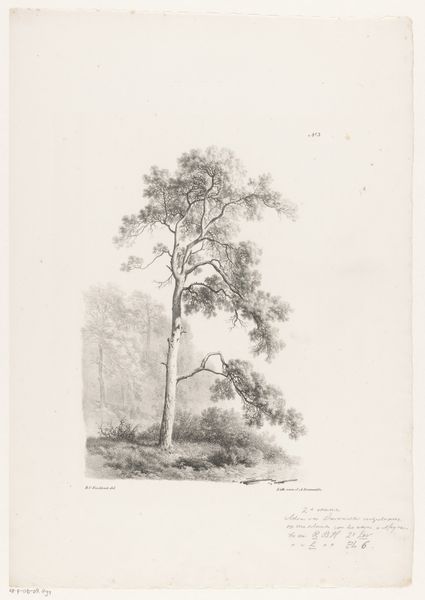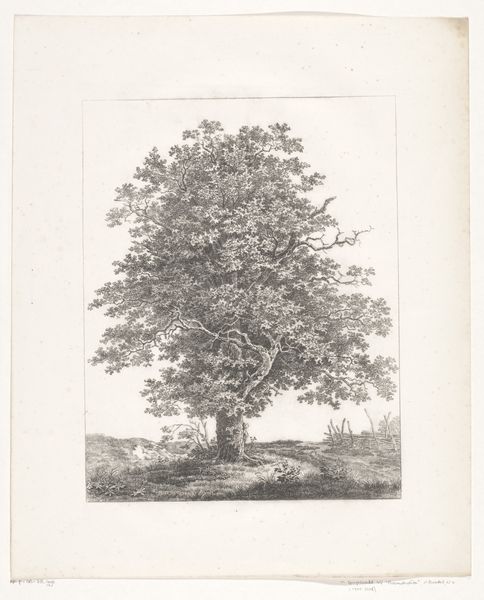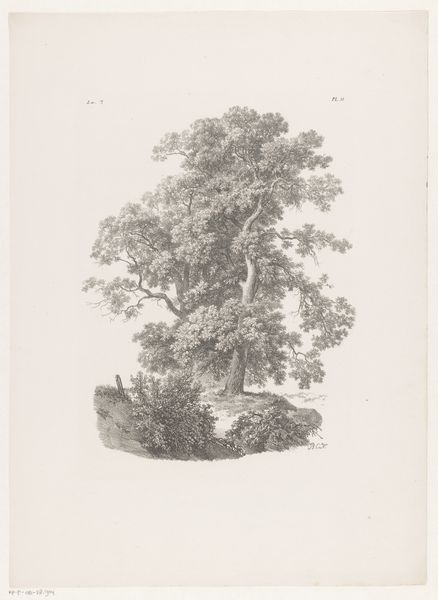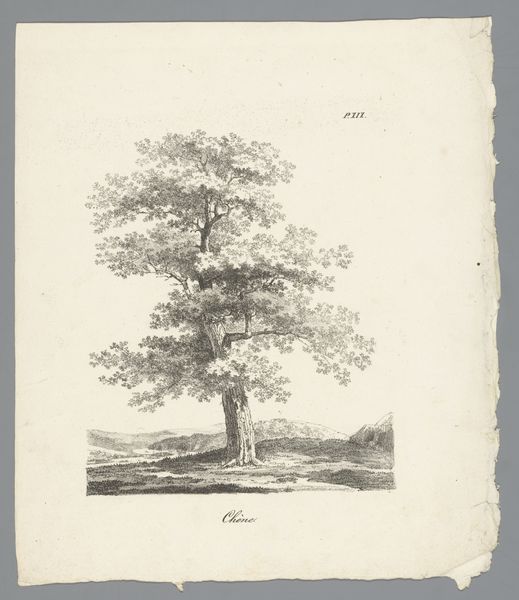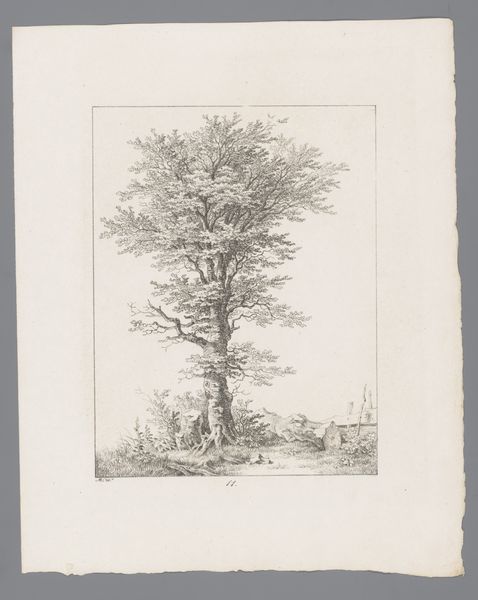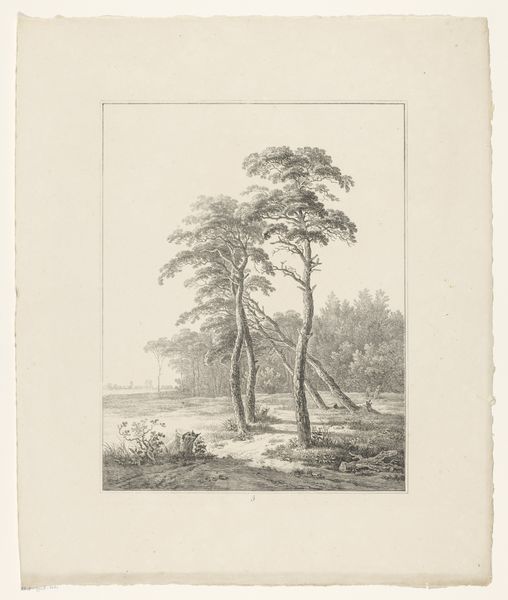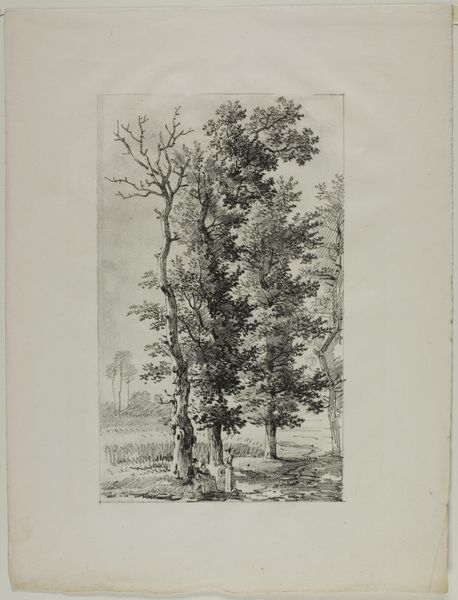
drawing, print, engraving
#
drawing
# print
#
landscape
#
romanticism
#
engraving
Dimensions: height 547 mm, width 447 mm
Copyright: Rijks Museum: Open Domain
Editor: Here we have Adrianus van der Koogh's "Boom in Weiland," made in 1826. It's a detailed engraving, and I'm struck by the simplicity of the lone tree dominating the scene. It seems almost like a portrait of a tree, not just a landscape. What draws your attention in this print? Curator: The method by which this "portrait" came to be is fascinating. Think about the labor involved in creating this image. Each line meticulously etched, a repetitive action, transforms the metal plate into a matrix, ready for reproduction. The print becomes a commodity, accessible to a broader audience, democratizing the landscape. What does this shift in access imply about nature in 1826? Editor: That's a great point! I hadn't considered the accessibility of prints. So, instead of needing to commission an original painting, more people could own an image of nature. Did this change how people perceived the landscape itself? Curator: Precisely! Consider the paper, the ink, and the printing press itself – all products of industrializing societies. This image, seemingly depicting untouched nature, is deeply intertwined with industrial production and the economics of visual representation. Even the framing within the drawn border turns nature into a composed scene fit for viewing in the home. Are we, perhaps, consuming an idea of nature as much as the image itself? Editor: So, it's not just about the tree; it's about how the materials and processes used to create the image change our relationship with nature. The romantic idea clashes with the reality of production. Curator: Exactly. Van der Koogh isn't just depicting a tree; he's participating in a complex system of production and consumption that shapes our understanding of nature and landscape in the 19th century. What do you make of the tree, as opposed to mass production itself? Editor: It highlights the contrast between the idealized, singular tree, and the industrialized means of portraying it. The labor put into the making is masked to give way for something 'romantic', yet in essence romanticism here has industrialized roots. Curator: Indeed, and that contradiction is the crux of a materialist reading of Romantic landscape art. This gives much to consider! Editor: Absolutely! It makes you rethink what you are looking at. Thanks for this insight.
Comments
No comments
Be the first to comment and join the conversation on the ultimate creative platform.

